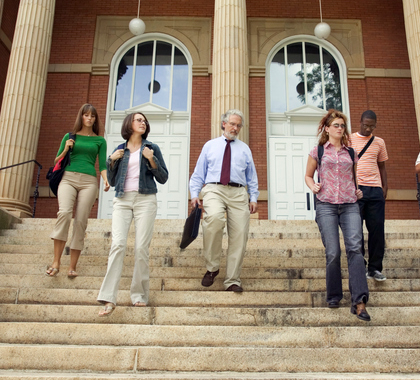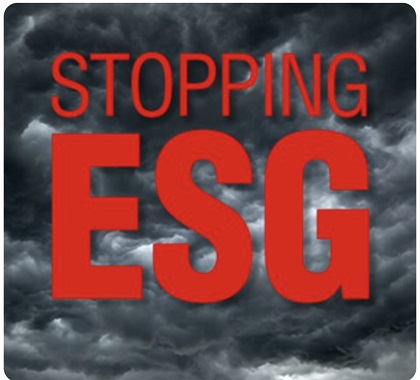A new paper from the Center for Education Reform (CER) states nearly half of all American students are growing up in low-income families without access to a quality education. The Case for Education Transformation: Part 1: The Disappointing Reality of American Education, written by CER Research Fellow Cara Candal, provides a litany of data showing just what a thoroughly mediocre job the traditional public school system has done in educating American children.
Candal claims, using an assertion from the National Center for Children in Poverty, 43 percent of all U.S. children reside in families “that do not have enough money to cover basic expenses.” Whether or not that assertion is true (a 2017 study from the Center for Budget and Policy Priorities, certainly not a right-learning organization, found the number of children living in poverty in the United States reached a record low in 2016) is certainly open for debate, but what isn’t is the data she provides on student achievement and the effect the lack of it has on society as a whole.
Candal begins by noting the latest National Assessment of Educational Progress test, also known as the “Nation’s Report Card,” shows “proficiency in basic content areas has changed remarkably little since the 1970s. They also reveal that few American [students] are actually proficient…in much of anything.” Only 34 percent of 8th grade students finished proficient in reading, and just 33 percent finished proficient in math. Roughly two-thirds of American students are scoring below grade level in these two subject areas by the time they enter high school. Candal also notes the difference in reading achievement between low-income and wealthy students is somewhere around 1.25 standard deviations, “[equating] to more than six years of learning in middle and high school.”
While more than 80 percent of all students graduate high school, and almost 70 percent enroll in college the fall after their graduation, only 54 percent of higher-income students will graduate college within six years. This number falls to just 19 percent for low-income students. “The data strongly suggests,” Candal writes, “the vast majority of high school graduates, especially those who attend rural and urban schools with concentrations of low-income students, simply aren’t prepared for the rigors of college.”
This failure in school achievement has impacts well into adulthood. Candal writes that greater than one in five adults in the United States are functionally illiterate, while another 28 percent read at a “very basic” level. That equates to roughly half the adult population of the United States. According to BeginToRead.com, 85 percent of juveniles who get involved in the correctional system are functionally illiterate, and “over 70 percent of inmates in America’s prisons cannot read above a fourth-grade level.”
Improving education in America is the most urgent public policy challenge of our era. Poor-performing schools put at risk the ability of our society to pass along to the next generation the essential core of knowledge that makes civilization possible. A free, open society is dependent on an educated citizenry that can think critically. What happens in the nation’s elementary and secondary schools, as Candal’s paper shows, profoundly affects the United States’ economic competitiveness and the abilities and values of the next generation of adults.
The key to transforming K–12 education is school choice. “The United States is one of the only industrialized countries that allows parents little flexibility to choose among public schools and one of only five OECD countries that does not provide government funding for privately-managed schools,” Candal wrote.
In the 21st century, we expect to be able to make choices narrowly tailored to meet our individual wants and needs. People today choose relatively easily where to live, what occupation to work in, and what transportation to use. Why should K–12 education be any different?
The goal of public education in the United States today and in the years to come should be to allow all parents to choose which schools their children attend, require every school to compete for every student who walks through its doors, and make sure every child has the opportunity to attend a quality school.
The following documents provide more information about school choice.
The Case for Education Transformation: Part 1: The Disappointing Reality of American Education
https://www.edreform.com/wp-content/uploads/2018/02/EducationTransformationPart1Data_021518_2.pdf
The first in a three-part report from the Center for Education Reform, this paper argues 43 percent of American children are growing up without access to quality education options and notes the United States is one of a only a few industrialized nations that provide parents so little flexibility and control over their child’s education.
Education Savings Accounts: The Future of School Choice Has Arrived
https://heartland.org/publications-resources/publications/education-savings-accounts-the-future-of-school-choice-has-arrived
In this Heartland Policy Brief, Policy Analyst Tim Benson discusses how universal ESA programs offer the most comprehensive range of educational choices to parents; describes the six ESA programs currently in operation; and reviews possible state-level constitutional challenges to ESA programs.
A Win-Win Solution: The Empirical Evidence on School Choice (Fourth Edition)
http://www.edchoice.org/wp-content/uploads/2016/05/A-Win-Win-Solution-The-Empirical-Evidence-on-School-Choice.pdf
This paper by EdChoice details how a vast body of research shows educational choice programs improve academic outcomes for students and schools, saves taxpayers money, reduces segregation in schools, and improves students’ civic values. This edition brings together a total of 100 empirical studies examining these essential questions in one comprehensive report.
The Public Benefit of Private Schooling: Test Scores Rise When There Is More of It
https://object.cato.org/sites/cato.org/files/pubs/pdf/pa830.pdf
This Policy Analysis from the Cato Institute examined the effect that increased access to private schooling has on international student test scores in 52 countries around the world, finding that a 1 percentage point increase in the private share of total primary schooling enrollment would lead to moderate increases in student math, reading, and science achievement within nations.
Ten State Solutions to Emerging Issues
https://heartland.org/publications-resources/publications/ten-state-solutions-to-emerging-issues-2018
This Heartland Institute booklet explores solutions to the top public policy issues facing the states in 2018 and beyond in the areas of budget and taxes, education, energy and environment, health care, and constitutional reform. The solutions identified are proven reform ideas that have garnered significant support among the states and with legislators.
Competition: For the Children
https://heartland.org/publications-resources/publications/competition-for-the-children
This study from the Texas Public Policy Foundation claims universal school choice results in higher test scores for students remaining in traditional public schools and improved high school graduation rates.
School Choice: Answers to Frequently Asked Questions About State Constitutions’ Religion Clauses
https://heartland.org/publications-resources/publications/school-choice-answers-to-frequently-asked-questions-about-state-constitutions-religion-clauses
This resource, authored by Richard D. Komer of the Institute for Justice, serves as an excellent primer on Blaine amendments, compelled support clauses, and other state constitutional religious clauses.
The School Voucher Audit: Do Publicly Funded Private School Choice Programs Save Money?
http://www.edchoice.org/wp-content/uploads/2015/07/The-School-Voucher-Audit-Do-Publicly-Funded-Private-School-Choice-Programs-Save-Money.pdf
This report by Jeff Spalding of EdChoice provides a program-for-program breakdown of school voucher costs and savings. On the whole, Spalding says these programs have provided a cumulative savings of $1.3 billion since 2007, or roughly $3,400 per pupil.
The Effects of Statewide Private School Choice on College Enrollment and Graduation: Evidence from the Florida Tax Credit Scholarship Program
https://heartland.org/publications-resources/publications/the-effects-of-statewide-private-school-choice-on-college-enrollment-and-graduation-evidence-from-the-florida-tax-credit-scholarship-program
This study from Urban Institute scholars Matthew Chingos and Daniel Kuehn shows Florida’s Tax Credit Scholarship Program boosted college enrollment for participating students by 15 percent, with students enrolled in the program for four or more years seeing a 46 percent hike.
School Choice Fallacies: Disproving Detractors’ Allegations Against Tax-Credit Scholarship Programs
https://www.edchoice.org/wp-content/uploads/2017/08/2017-7-Tax-Credit-Brief.pdf
This report from Martin Lueken and Michael Shaw at EdChoice examine tax codes to address claims alleged by school choice detractors, such as: Tax-credit scholarship programs lead to “profit,” “double-dipping,” “get-rich schemes,” and “tax shelters” for donors.
Nothing in this Research & Commentary is intended to influence the passage of legislation, and it does not necessarily represent the views of The Heartland Institute. For further information on this subject, visit School Reform News, The Heartland Institute’s website, and PolicyBot, Heartland’s free online research database.
The Heartland Institute can send an expert to your state to testify or brief your caucus; host an event in your state; or send you further information on a topic. Please don’t hesitate to contact us if we can be of assistance! If you have any questions or comments, contact John Nothdurft, Heartland’s director of government relations, at [email protected] or 312/377-4000.




